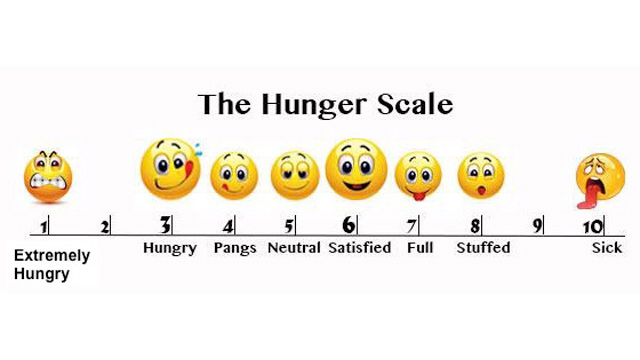
Hunger scale – Coping with your hunger pangs
Posted on September 25, 2016 with 0 comments
Watching what you eat and controlling your body weight is essential for people living with diabetes. But when people are trying to control their weight, they often complain that they ‘always feel hungry’!
Through our customized diet plans, we often advise people with diabetes often are advised to eat their meals around the same time every day. Many-a-times people are so used to following this daily routine that they’re totally unaware how actually physical hunger feels like.
We at Advanced Diabetes Centre, help people with diabetes to truly understand their own bodies. We also help them to understand their true need for food.
‘Hunger scale’, a simple yet scientific tool comes to the rescue when people indulge in ‘mindless’ eating – Eating when they’re not actually feeling hungry. It helps them to control their eating patterns and also control the body weight.
The Hunger Scale
| 0 | 3 | 5 | 7 | 10 |
| Extremely Hungry | Hungry | Comfortable | Full | Stuffed |
Use the simple steps below to use Hunger Scale to your benefit:
- Before you start to eat, rank your hunger on a scale of 1-10; 1= Extremely hungry; 10 = being ‘stuffed’
- When you’re halfway through your meal, again rank your hunger on the same scale of 1-10. If you’re at 5, 6, or 7 – Stop eating
- If you want to keep eating, finish your meal and again rank your hunger on a scale of 1-10. Of course, you need to be honest with yourself while ranking. If you feel that you had a hearty meal and still got a bowl full of delicious gulab jamun in front of you then there are strong chances that you’re eating to help deal with a different emotion.
The scale might look simple but if you use it regularly, you can learn a lot about your eating patterns.If you are hungry, then you will only be able to suppress your hunger pang for a short interval. However, the desire for food will win over the willpower to control the urge. Such person may not succeed in significant weight loss.
The objective is to make people more mindful of their meals and snacks. This helps to curb the excess food they eat and control weight. Realignment of people’s eating with their body’s cues for the amount of energy needed is feasible with the Hunger Scale. Eating fairly throughout the day (every 3-5 hours) is the main objective.
Ideally, one should have their meals or snacks no longer than 1 hour after they start feeling hungry (level 3 of Hunger Scale) and continue eating until he/she feels between comfortable and full (between levels 5 and 7). You will eat until level 8 -10 (stuffed and uncomfortable) if you wait longer until you are very hungry (about 2 hours). The person tends to eat more quickly and also overeat if they’re extremely hungry.
At Advanced Diabetes Centre, we advise people living with diabetes to enjoy and eat their meals slowly. People should give more time to their body to register fullness. This will ensure adequate nourishment and avoid overeating. A combined analysis of hunger levels, food intake helps our experts to guide people to be more mindful and take better control of their eating patterns. Lifestyle modification using Hunger Scale helps establish a long-term control for people living with diabetes.
If you wish to know more about Hunger Scale and how to control your hunger pangs, give us a missed call on 7227000100 or call Advanced Diabetes Centre on 0261 2600100.
Tags: diet plans, Food, Hunger, Hunger Scale, weight loss